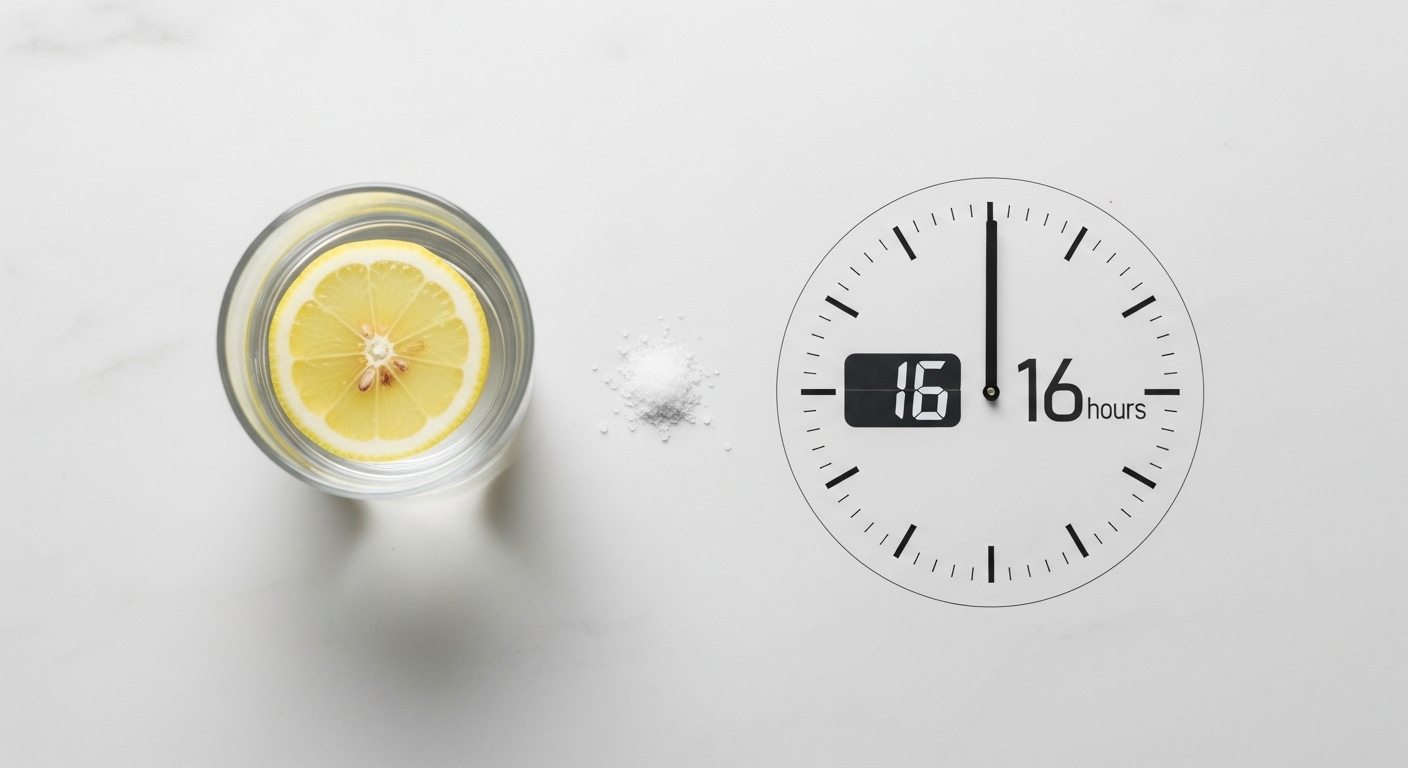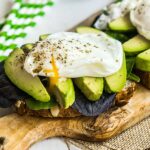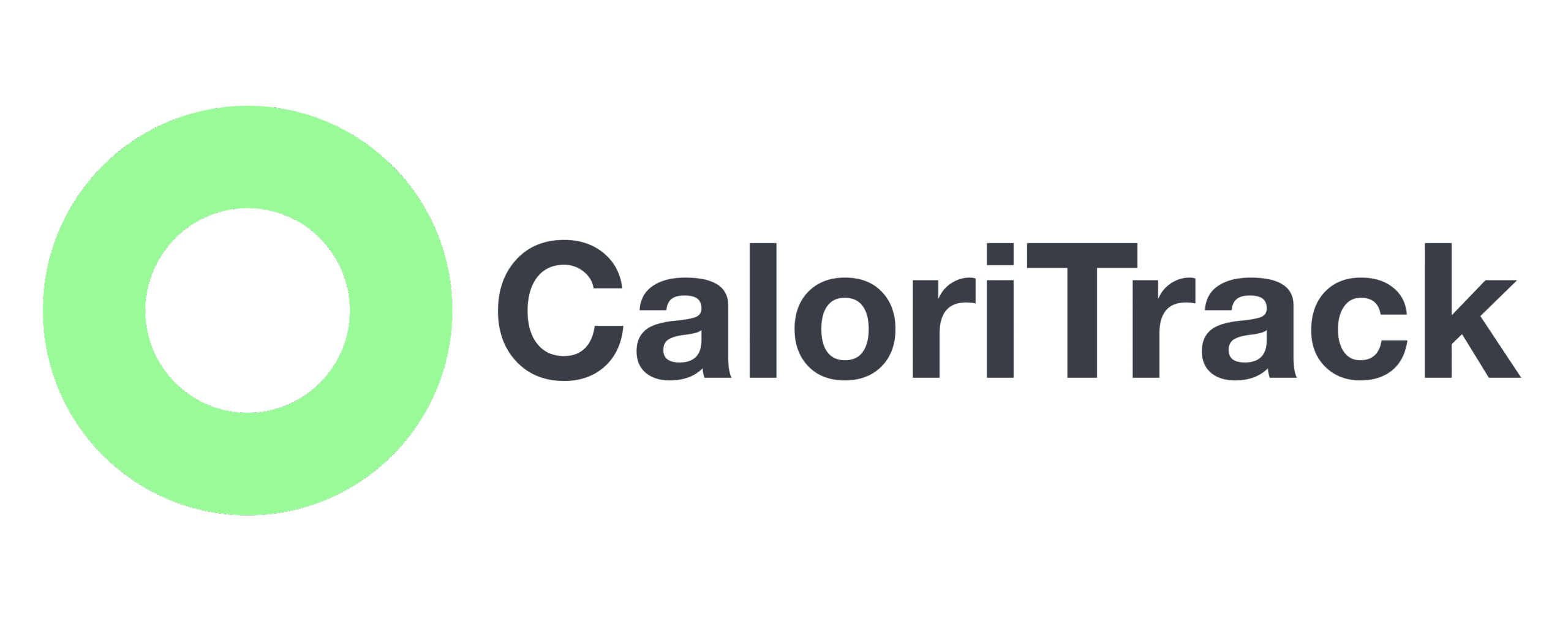
Master Your First Fast: The Quick Scientific Guide to Starting Successfully
Welcome to the world of fasting. At Caloritrack, we don’t see fasting as just a timer; we see it as a powerful scientific tool for cellular self-discovery and metabolic reset. It’s one of the most effective ways to understand your body’s signals.
But to succeed, you must respect the process. This quick guide is designed to help you navigate your first fast safely and effectively, teaching you the “why” behind each step.
1. RULE #1: Hydration with Electrolytes (The Key to Success)
This is the most critical point and where most beginners fail. Do not drink only plain water.
- Why? Fasting acts as a natural diuretic. This means you will urinate more, and with that water, your body will flush out essential mineral salts (electrolytes), primarily sodium.
- The Common Mistake: If you replace this loss only with plain water, you further dilute your body’s electrolyte levels. This imbalance is what causes headaches, dizziness, and extreme fatigue—it’s not the lack of food, it’s the lack of minerals.
- The Solution: You must actively replenish these minerals. The simplest way is to add salt (sodium) to your liquids. Sodium is essential for nerve function and muscle contraction.
- DIY Electrolyte Mix: Mix 1 liter (about 32 oz) of water with 3 grams of salt (approx. half a teaspoon) and the juice of one lemon. Sip this when you feel thirsty.
- Listen to your body! Thirst is your guide. You do not need to force the electrolyte mix or water if you are not thirsty. This is about balance, not excess.
2. Start Slowly (Constancy over Perfection)
You don’t need to jump into a 16-hour fast on day one. Adaptation is key. This aligns with our philosophy of focusing on constancy, not perfection.
- Day 1-3: Start with a simple 12-hour fast (e.g., from 8 p.m. to 8 a.m.). This is mostly sleep.
- Day 4-6: If you feel good, increase to 14 hours (e.g., from 8 p.m. to 10 a.m.).
- Day 7 onwards: Try the popular 16/8 schedule (fasting for 16 hours, eating in an 8-hour window).
This gradual progression teaches your body to adapt, building a sustainable habit rather than forcing a shock to the system.
3. Choose Your Schedule and Be Consistent
Once you find a schedule that works for you (like 16/8), stick to it.
- Form a Habit: Eating and fasting at the same times helps regulate your body’s internal clocks, a key part of optimizing your circadian rhythm.
- Control Hunger: This consistency helps your hunger hormone (ghrelin) adjust to the routine. You’ll find it only “turns on” near your scheduled mealtime, making the fast much easier.
4. Allowed “Foods”: Zero Calories
The goal of fasting is to keep your insulin levels low and stable, allowing your body to enter a state of metabolic rest and repair (autophagy). Any calories can break this state.
- Allowed: Water, your electrolyte mix (when thirsty), black coffee (no sugar or milk), tea (preferably non-fruity ones like green, black, or herbal), and apple cider vinegar (always diluted in water).
- Not Allowed: Any food. We also strongly recommend avoiding sweeteners (even artificial or natural zero-calorie ones). While they may not have calories, they can sometimes trigger an insulin response or, just as importantly, feed cravings and mentally keep you tethered to sweetness.
5. Break Your Fast Intelligently
How you end your fast is just as important as the fast itself. You are re-introducing fuel to a resting system.
- Prioritize: Always start with protein and healthy fats (e.g., avocado, eggs, meat, olive oil). This provides satiety and avoids a sharp glucose spike.
- Carbs at the End: If you are going to eat carbohydrates or fruit, have them as the “dessert” of your meal, after you’ve already consumed your protein and fat.
- Avoid: Steer clear of ultra-processed foods, refined flours, or sugars to break your fast. This would be a jarring shock to your system and negate many of the benefits you just worked for. This aligns with our “Precision Nutrition” pillar, which favors natural, whole foods.
Additional Points for Success
6. Understand the Sensation of Hunger (It’s Not an Emergency)
This is where a Stoic mindset comes in. Hunger comes in waves; it is not constant. It’s a sensation, not a command.
- When a wave of hunger arrives, observe it. It will likely last 10-15 minutes and then pass. Distract yourself, stay busy, and have some of your electrolyte drink. You will discover that the sensation passes. This is a powerful form of self-knowledge.
7. The Importance of Sleep
Fasting is a form of positive stress (hormesis). Poor sleep is a form of negative stress.
- Hormones: Sleeping badly increases the hunger hormone (ghrelin) and the stress hormone (cortisol), making fasting unnecessarily difficult. As we track in our Health dashboard, quality sleep is the foundation of hormonal balance. To fast well, you must sleep well.
8. A Note on Exercise
- The First Week: It’s normal to feel a bit weaker during your workout. Take it easy and listen to your body.
- Adaptation: By the second week, your body will begin to adapt to using fat for fuel more efficiently, and you’ll likely feel much better. Always listen to your body’s signals.
⚠️ 9. Contraindications and Important Precautions
Our commitment is to science and your safety. The golden rule is: Always consult your doctor before starting, especially if you have any pre-existing health conditions. Fasting is not for everyone.
Fasting is not recommended without strict medical supervision in the following cases:
- People with Chronic Kidney Disease (CKD): Fasting can cause dangerous fluid and electrolyte imbalances that damaged kidneys cannot handle.
- People with Diabetes (especially Type 1): There is a risk of ketoacidosis, a serious medical complication.
- People with High Blood Pressure who take medication (especially diuretics): The combination can lead to severe dehydration.
- Women who are pregnant or breastfeeding.
- Individuals with a history of eating disorders.
- Individuals who are significantly underweight.
For most healthy people, fasting is safe, but the primary risk is dehydration. That is why Rule #1 (Electrolytes) is crucial to protect your health.
Your Journey, Your Guide
Fasting is a powerful tool, but it’s only one piece of your integrated wellness puzzle. Use it as a way to learn, not to punish.
In Caloritrack, the Fasting pillar is designed to be your scientific guide on this journey, helping you understand what’s happening in your body every step of the way. You have the control.
Ready to apply this guide? Don’t just count the hours. Download CaloriTrack to track your fast, understand every scientific phase (like autophagy), and connect your progress to your complete health.
Download CaloriTrack on the App Store (Free Trial)
Supporting Scientific Links and References
“Physiology and biochemistry in fasting” [Fisiología y bioquímica en el ayuno] – Dialnet: This academic article details the physiological changes of fasting, confirming the loss of salt and the “fundamental importance of a continued exogenous supply of electrolytes.” Link to PDF on Dialnet
“The importance of hydration and electrolytes while intermittent fasting” – https://www.google.com/search?q=Sodii.com.au: Explains how low insulin levels (an effect of fasting) act as a diuretic, causing the release of sodium and water, which is directly linked to the dizziness and fatigue beginners may feel. Link to Sodii
“How to Break Your Fast Without Messing up Your Glucose” – Nutrisense: Recommends prioritizing “protein, healthy fats, and low glycemic carbohydrates” to stabilize blood sugar, supporting our “carbs at the end” advice. Link to Nutrisense
“Diabetes and intermittent fasting: Benefits and risks” – Medical News Today: Advises to avoid sugars and processed carbs when breaking a fast, focusing instead on lean meat and healthy fats to stabilize glucose. Link to Medical News Today
“Intermittent fasting is not advisable for all people with obesity” [El ayuno intermitente no es aconsejable…] – Spanish Society of Endocrinology and Nutrition (SEEN): An authority source that advises against fasting for patients with chronic conditions like type 1 diabetes or chronic renal failure, validating our precautions. Link to Revista Alimentaria
“Thoughts on Intermittent Fasting” – National Kidney Foundation of Hawaii: States that diabetics and people on medication (especially diuretics) should not fast without consulting a doctor, backing up our safety warnings. Link to KidneyHI














